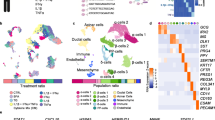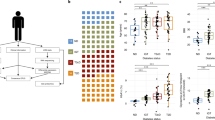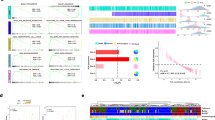Abstract
Bi-functional shRNA (bi-shRNA), a novel RNA interference (RNAi) effector platform targeting PDX-1 utilizing a systemic DOTAP-Cholesterol delivery vehicle, was studied in three mouse models of progressive pancreatic neoplasia. Species-specific bi-functional PDX-1 shRNA (bi-shRNAPDX-1) lipoplexes inhibited insulin expression and secretion while also substantially inhibiting proliferation of mouse and human cell lines via disruption of cell cycle proteins in vitro. Three cycles of either bi-shRNA<sup>mousePDX-1</sup> or shRNA<sup>mousePDX-1</sup> lipoplexes administered intravenously prevented death from hyperinsulinemia and hypoglycemia in a lethal insulinoma mouse model. Three cycles of shRNA<sup>mousePDX-1</sup> lipoplexes reversed hyperinsulinemia and hypoglycemia in an immune-competent mouse model of pancreatic neoplasia. Moreover, three cycles of the bi-shRNA<sup>humanPDX-1</sup> lipoplexes resulted in near complete ablation of tumor volume and considerably improved survival in a human PANC-1 implanted SCID-mouse model. Human pancreatic neoplasia specimens also stained strongly for PDX-1 expression. Together, these data support the clinical development of a novel therapeutic strategy using systemic bi-shRNA<sup>PDX-1</sup> lipoplexes against pancreatic neoplasia.
Similar content being viewed by others
Article PDF
Author information
Authors and Affiliations
Rights and permissions
About this article
Cite this article
Wang, Z., Stehling, K., Gibbs, R. et al. A novel therapeutic strategy for pancreatic neoplasia using a novel RNAi platform targeting PDX-1. Nat Prec (2011). https://doi.org/10.1038/npre.2011.6047.1
Received:
Accepted:
Published:
DOI: https://doi.org/10.1038/npre.2011.6047.1



